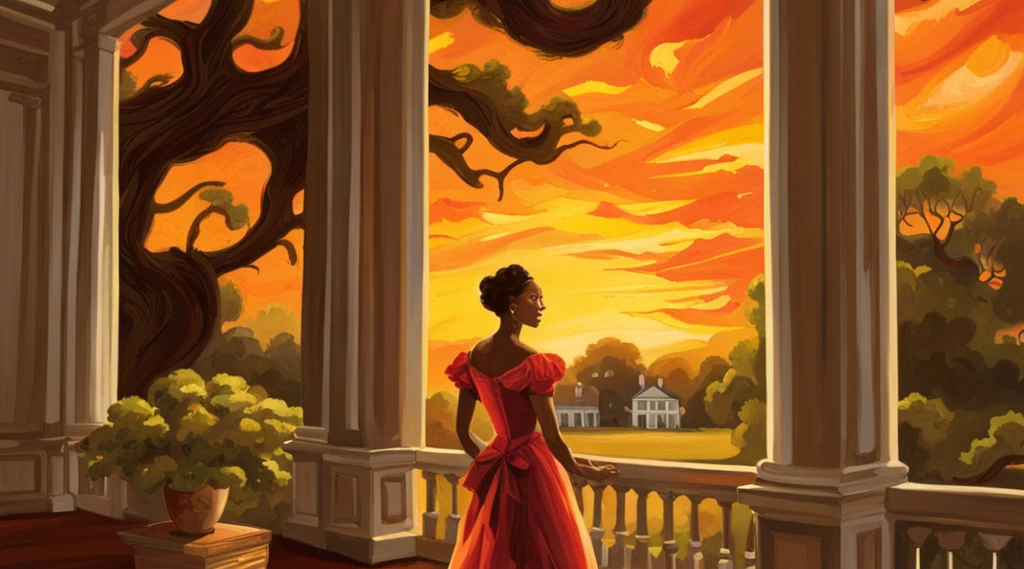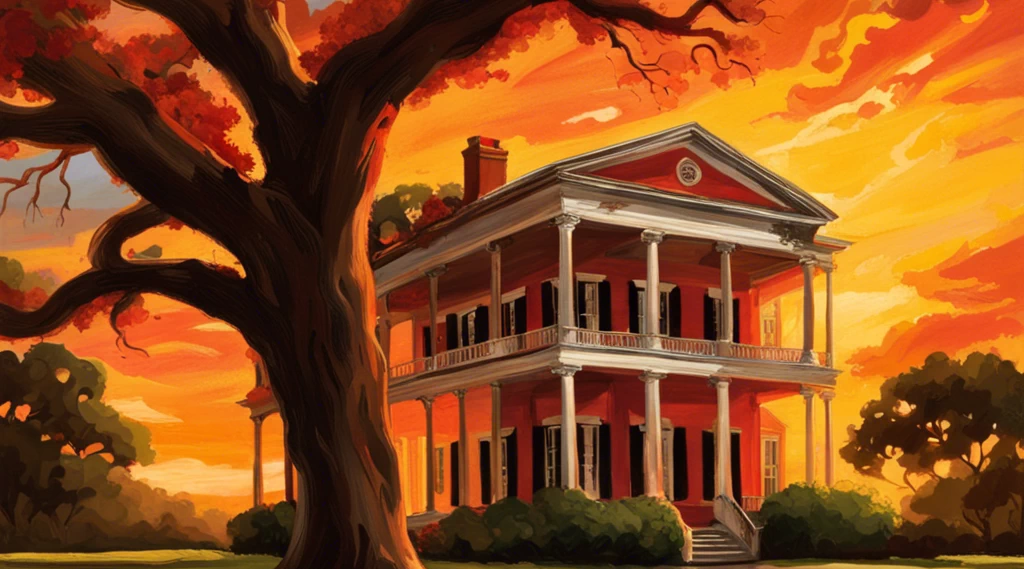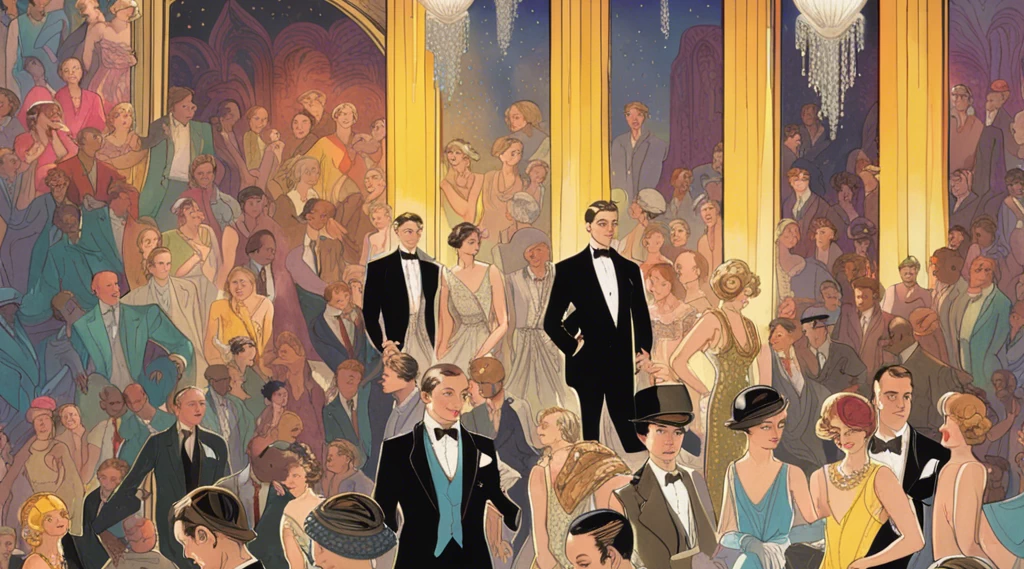— The Great Gatsby & Gone with the Wind
Literature has long served as a mirror reflecting the complexities of human nature, society, and the ever-changing dynamics of individuals’ lives. Among the vast tapestry of literary masterpieces, F. Scott Fitzgerald’s “The Great Gatsby” and Margaret Mitchell’s “Gone with the Wind” stand out as timeless classics that have captivated readers for generations. Though set in different eras and exploring distinct themes, both novels delve deep into the human psyche, unraveling the intricacies of love, ambition, social class, and the pursuit of the American Dream.
In this comparative study, we will analyze these two iconic novels, seeking to understand the similarities and differences in their narratives, characterizations, and underlying messages. By examining the historical context, cultural nuances, and authorial styles, we aim to uncover how “The Great Gatsby” and “Gone with the Wind” offer profound insights into the human condition while presenting contrasting perspectives on key aspects of life.
Through an exploration of the themes of romantic idealism, societal decay, and the effects of war and personal loss, we will navigate the literary landscapes painted by Fitzgerald and Mitchell, drawing connections between their characters, settings, and narrative techniques. Additionally, we will examine the social commentary embedded within each novel, shedding light on the authors’ critiques of their respective societies and shedding light on the larger implications for humanity as a whole.
As we embark on this journey of comparison, it is important to recognize that “The Great Gatsby” and “Gone with the Wind” hold their own unique places in the canon of American literature. By juxtaposing these remarkable works, we hope to gain a deeper appreciation for their individual brilliance while illuminating the shared threads that make them essential pillars of literary history.
Brief Summary of Two Books
The Great Gatsby
The Great Gatsby” is a classic novel written by F. Scott Fitzgerald and published in 1925. Set during the Roaring Twenties, the story follows Jay Gatsby, a mysterious and wealthy man who throws extravagant parties at his lavish mansion in West Egg, Long Island. The narrator, Nick Carraway, moves to the area and becomes fascinated by Gatsby’s lifestyle and his pursuit of Daisy Buchanan, a married woman he loved years ago.
As the narrative unfolds, we learn about Gatsby’s past and his relentless efforts to win back Daisy. Through Nick’s perspective, we observe the excesses and shallowness of the wealthy elite, their hedonism, and their obsession with social status. The novel explores themes of the American Dream, love, wealth, and the decay of moral values.
Throughout the story, Gatsby’s illusions and idealizations gradually unravel, exposing the reality behind the façade of wealth and glamour. Tragedy ensues as Gatsby’s dreams collide with harsh realities, leading to a shocking climax that highlights the emptiness and hollowness of the Jazz Age society.
“The Great Gatsby” delves into the complexities of human nature, capturing both the allure of wealth and the limitations of pursuing unattainable dreams. It remains a timeless portrayal of the American Dream and a critique of the shallow excesses of the Jazz Age.
Gone with the Wind
Gone with the Wind” is a sweeping historical novel written by Margaret Mitchell. Set against the backdrop of the American Civil War and Reconstruction era, it follows the life of Scarlett O’Hara, a headstrong Southern belle living on her family’s plantation named Tara.
Scarlett is portrayed as a complex and ambitious character, who goes through numerous challenges and transformations throughout the story. She is in love with Ashley Wilkes, a man from a neighboring plantation, but he marries Melanie Hamilton instead. Determined to win him back, Scarlett marries Melanie’s brother, Charles, though the marriage is short-lived due to his untimely death during the war.
As the war progresses, Scarlett discovers her resilience and resourcefulness, taking charge of Tara and holding onto it despite the devastation around her. She finds comfort in the companionship of Rhett Butler, a charming yet enigmatic blockade runner. Their turbulent relationship becomes a central element of the story.
Mitchell artfully weaves together themes of love, survival, and societal change, exploring the complexities of relationships and the struggles faced by the Southern society during this tumultuous period in American history. The novel delves into issues such as slavery, racial tensions, and the challenges faced by women in a patriarchal society.
“Gone with the Wind” provides a vivid depiction of the South’s transformation, capturing both the romanticized image of the antebellum lifestyle and the harsh realities of war and its aftermath. Mitchell’s rich storytelling combines historical accuracy with emotional depth, leaving readers captivated by the characters’ journeys and the timeless themes explored in this iconic novel.

Comparison Between the two Books
Similarities in Social Hierarchy
Both “The Great Gatsby” by F. Scott Fitzgerald and “Gone with the Wind” by Margaret Mitchell explore social hierarchies during different time periods in American history. While the novels differ in terms of setting, characters, and plot, they share several similarities in their depiction of social classes and the impact of wealth and status on individuals:
Importance of Old Money:
In both novels, the concept of established wealth and lineage is highly valued. Characters from old-money families hold significant power and influence within their respective societies. They are often portrayed as having a sense of entitlement and are treated with deference by those below them. This emphasis on inherited wealth highlights the entrenched social hierarchy.
Desire for Social Mobility:
Both novels feature protagonists who aspire to move up the social ladder. Jay Gatsby in “The Great Gatsby” and Scarlett O’Hara in “Gone with the Wind” are driven by their desire to attain wealth and higher social standing. They are willing to go to great lengths, including engaging in deception and manipulation, to gain acceptance and recognition from the upper class.
Superficiality and Materialism:
The two novels highlight the excessive materialism and lavish lifestyles of the upper echelons of society. The wealthy characters in both books are often portrayed as shallow, placing great importance on outward appearances, extravagant parties, and extravagant possessions. This emphasis on material wealth reinforces the notion that social status is primarily determined by one’s economic standing.
Restrictions on Women:
Both novels depict the restrictive roles and expectations placed upon women within their respective societies. Women are expected to conform to societal norms and marry into wealth or maintain their family’s reputation through marriage. They face limitations on their independence and are often objectified as status symbols for men. The social hierarchy further reinforces these gender disparities.
Fragility of Social Status:
Both novels explore the fragility and transitory nature of social status. Characters who have recently acquired wealth or gained higher standing often face challenges in fully assimilating into the upper class. They are looked upon with skepticism and disdain by those who are born into privilege, highlighting the difficulties of breaking through the social barriers.
In summary, “The Great Gatsby” and “Gone with the Wind” delve into the complexities of social hierarchy, highlighting the influence of old money, the pursuit of social mobility, the superficiality of high society, the restrictions on women, and the fragile nature of social status. These shared themes provide readers with insights into the impact of wealth and social standing on individuals’ lives in different periods of American history.

Divergences in Social Hierarchy
Despite their shared timeframe, The Great Gatsby and Gone with the Wind differ in their exploration of social hierarchy and its implications. Here are some notable divergences:
Geographical and cultural context:
The Great Gatsby primarily focuses on the wealthy elite residing in the fictional East Egg and West Egg areas of Long Island, New York. On the other hand, Gone with the Wind sets its story in the antebellum South, particularly Georgia, highlighting the contrasting worlds of the rich plantation owners and the impoverished white and black communities.
Origins of wealth:
In The Great Gatsby, wealth is often associated with the emergence of the nouveau riche, individuals who accumulated vast fortunes through bootlegging and other illegal means during the Roaring Twenties. It portrays the superficiality and fragility of this newfound prosperity. In contrast, Gone with the Wind portrays the old Southern aristocracy, whose wealth is rooted in the labor-intensive plantation system and slavery. The novel examines the collapse of this traditional hierarchy in the face of Civil War and Reconstruction.
Social mobility and values:
The Great Gatsby explores the concept of social mobility, highlighting how some characters are able to rise or fall within the social hierarchy based on their actions and connections. The characters are driven by materialism, the pursuit of pleasure, and the desire for status. In contrast, Gone with the Wind depicts a society where social mobility is limited, and one’s place in the hierarchy is determined by birth and family name. Honor, chivalry, and adherence to societal roles play a significant role in shaping the characters’ actions.
Race and slavery:
The issue of race is central to Gone with the Wind due to its setting in the South during the era of slavery. The novel explores the hierarchical structure imposed by the racial divide, emphasizing the exploitation of black slaves by white plantation owners. In contrast, The Great Gatsby focuses primarily on the struggles and interactions of the white upper class, with minimal exploration of racial dynamics.
In conclusion, while both The Great Gatsby and Gone with the Wind provide fascinating insights into the social hierarchies of their respective settings, they diverge in terms of geographical context, origins of wealth, social mobility, values, and the inclusion of race and slavery. These differences contribute to the unique narratives and perspectives presented in each novel.
Conclusion
Both “The Great Gatsby” and “Gone with the Wind” are considered classics in American literature, each offering unique perspectives on a particular era in history. The choice between them depends on personal preferences and interests, so it ultimately comes down to what themes, settings, and writing styles resonate more with you. Here’s an overview of both books:
The Great Gatsby by F. Scott Fitzgerald:
Set in the 1920s, the novel explores the glitz and glamour of the Jazz Age in America.
It delves into themes such as the American Dream, wealth, love, and the hollowness behind material success.
Fitzgerald’s writing style is poetic and lyrically captivating, with vivid descriptions and introspective passages.
Gone with the Wind by Margaret Mitchell:
Set during the American Civil War and Reconstruction Era, it follows the life of Scarlett O’Hara and her struggles in the South.
It offers a sweeping historical backdrop, examining social dynamics, racial issues, and the transformation of a society.
Mitchell’s writing style is richly detailed, incorporating elements of romance, drama, and adventure.
If you prefer a tale of disillusionment and critique of the American Dream, then “The Great Gatsby” may be more compelling for you. On the other hand, if you’re interested in a historical epic with strong character development and societal exploration, “Gone with the Wind” might be the better choice. Ultimately, both books have their merits, and reading either one can provide valuable insights into different aspects of American culture and history.



